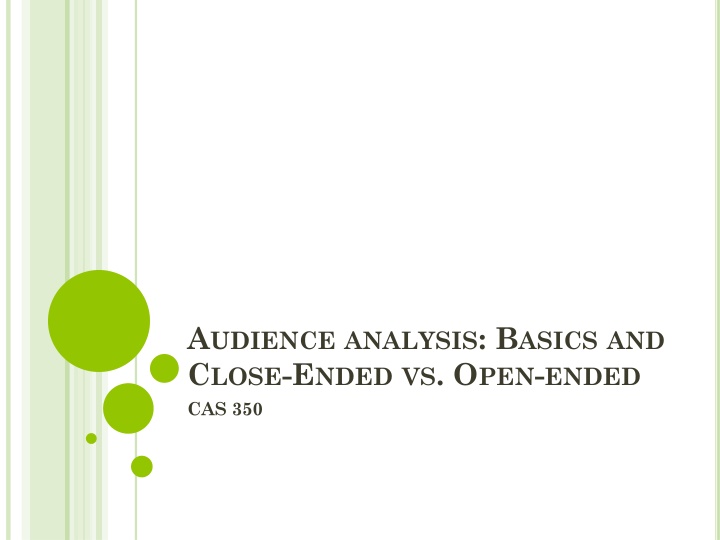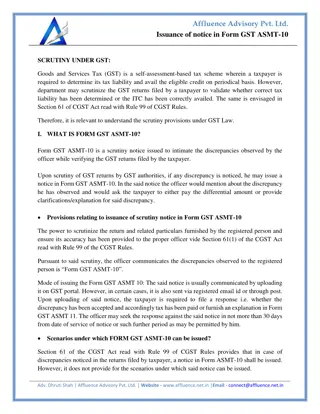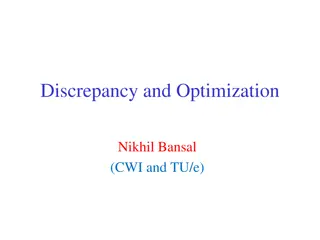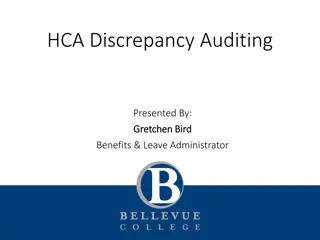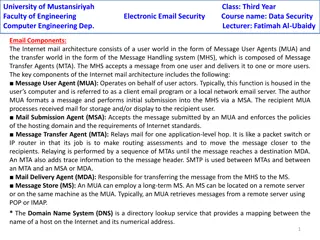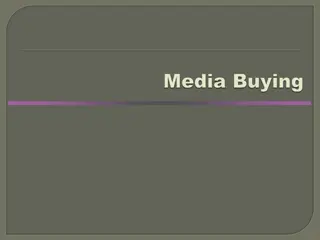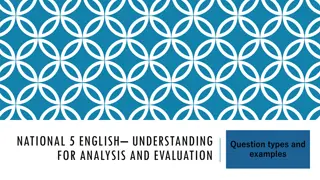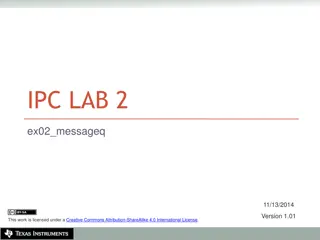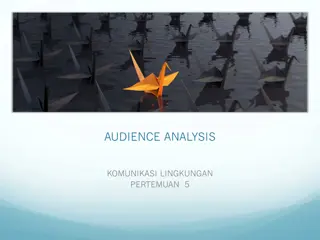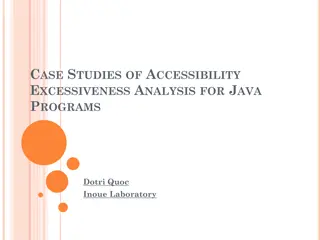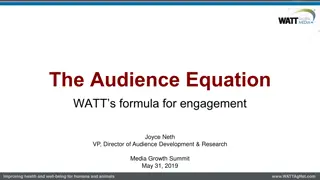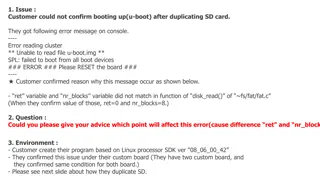Basics of Audience Analysis and Message Discrepancy
Audience analysis is fundamental in effectively designing campaigns by segmenting the audience based on psychological characteristics and situational factors. Understanding message discrepancy helps in identifying how persuasive communication can be. This content explores the importance of audience segmentation, theories on message discrepancy, and the stages of behavior change. It also delves into close-ended items and various scales used in audience analysis.
Download Presentation

Please find below an Image/Link to download the presentation.
The content on the website is provided AS IS for your information and personal use only. It may not be sold, licensed, or shared on other websites without obtaining consent from the author.If you encounter any issues during the download, it is possible that the publisher has removed the file from their server.
You are allowed to download the files provided on this website for personal or commercial use, subject to the condition that they are used lawfully. All files are the property of their respective owners.
The content on the website is provided AS IS for your information and personal use only. It may not be sold, licensed, or shared on other websites without obtaining consent from the author.
E N D
Presentation Transcript
AUDIENCE ANALYSIS: BASICS AND CLOSE-ENDED VS. OPEN-ENDED CAS 350
WHY MEASURE? Audience Segmentation Divide audience into specific, homogeneous sub- groups by audience analysis Single messages designing campaigns Can improve campaign effectiveness Effective segment requires segmenting related to persuadablility Some psychological characteristics Eg. Need for cognition Situational factors more important Exigency / Solution / Barriers Theories
MESSAGE DISCREPANCY Difference between audience s position and position speaker is advocating Analyze audience, what type of goal to suggest Low/No Discrepancy: continuance because already agree with position High: hard to persuade Moderate: good potential to persuade to any type of goal Considering your audience analysis What is the message discrepancy between yourself and your audience? What can you do to address the message discrepancy?
WHY MEASURE? Stage Theory Pre-contemplation Stage No intention to change No use try persuade behavior Contemplation Stage Begin to consider changing in future Receptive to persuasive messages Preparation Stage Committed to change, but may not know how Looking for instructive messages Action Stage Performing behavior Continual encouragement Maintenance Stage Ongoing performance Continue to reinforce the behavior
CLOSE-ENDED ITEMS Scale items Selection of specific answer from range answers Quantify specific answer in relation to range Pair-wise comparison Comparison of two or more options for preference - - - - - - - -
CLOSE-ENDED ITEMS Likert scale items Measures level of agreement-disagreement to statement Also for other answers where range is from negative to positive
CLOSE-ENDED ITEMS Semantic differential scale items Used to measure connotative meanings to derive attitudes towards object Uses paired adjectives to describe object Measures agreement with use of adjective to describe object
CLOSE-ENDED ITEMS Good for getting information from wide range, large number people Bad for getting in-depth answers, explanations Could be getting incorrect information Social desirability Lacking motivation to carefully answer Tendency to just agree Influenced by survey format Confused by wording of items When works: Get percentages of what people think, feel, do Get average for what sample, population thinks, feels, does Use these numbers to determine what need in message
OPEN-ENDED ITEMS When to use open-ended items Paired with close-ended If want to get more in-depth answer to scale item Instead of close-ended To gather range of possible answers Can help to develop close-ended items When unsure what are answers, want more in-depth answers BUT, more involved interpretation Longer to analyze, harder to interpret
